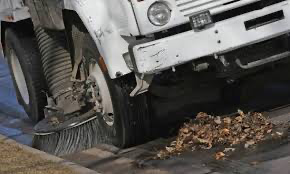The Crucial Role of Air Sweepers in Combating Stormwater Runoff Pollution |

Street sweepers play a crucial role in protecting the environment by removing pollutants, including microplastics, from urban streets before they can enter the stormwater system and eventually end up in waterways. This makes street sweeping an effective best management practice (BMP) for stormwater pollution control.
April, 2024
Street Sweepers Excel at Removal of PollutantsStreet surfaces accumulate a wide range of pollutants from various sources, such as vehicle emissions, tire wear, brake lining dust, and littering. These pollutants include heavy metals, hydrocarbons, nutrients, and microplastics. If left uncollected, these contaminants can be washed off by stormwater runoff and discharged into nearby water bodies, causing significant harm to aquatic ecosystems. Modern street sweepers, particularly those equipped with regenerative air or vacuum systems, are highly effective at removing fine particulate matter, including microplastics, from street surfaces. Studies have shown that these advanced sweepers can achieve significant reductions in pollutant washoff, making them a valuable BMP for improving stormwater quality. Environmental BenefitsSweeping has been shown to be by far the best way to prevent pollutants such as nitrogen and phosphorus from entering waterways. By doing so, street sweeping helps protect aquatic life and maintain the ecological balance of water bodies. It also contributes to improving air quality by reducing the amount of particulate matter that can become airborne and contribute to respiratory health issues. Furthermore, street sweeping plays a role in preserving the integrity of urban infrastructure. By removing debris and sediments, it helps extend the lifespan of pavements and prevents the clogging of storm drains, which can lead to flooding and costly repairs. Effective ImplementationTo maximize the environmental benefits of street sweeping, it is essential to implement an effective program that considers factors such as sweeping frequency, equipment selection, and targeted areas. Regular sweeping, especially in high-traffic areas and before rain events, can significantly reduce the amount of pollutants entering the stormwater system. Additionally, municipalities should invest in advanced sweeping technologies specifically designed for efficient removal of fine particles and microplastics. Air sweepers are better at doing so than mechanical broom machines, so that is the technology that should be employed in sweeping most city streets and other areas where large debris (tire casings, mufflers, etc.) tends not to be present. Proper training of operators and maintenance of equipment are also crucial for ensuring optimal performance. In conclusion, street sweeping is an invaluable environmental best practice that effectively removes pollutants, including microplastics, from urban streets before they can contaminate waterways and harm ecosystems. By implementing comprehensive and well-designed street sweeping programs – and emphasizing the use of regenerative air and vacuum sweepers wherever possible – municipalities and other agencies can make a significant contribution to protecting the environment and promoting sustainability. |
© 2005 - 2024 World Sweeper
|
Street Contents
|